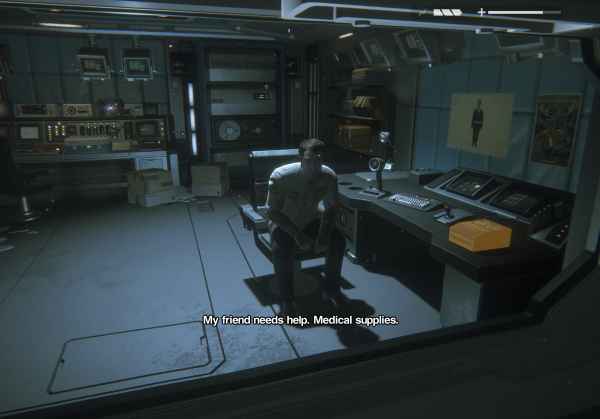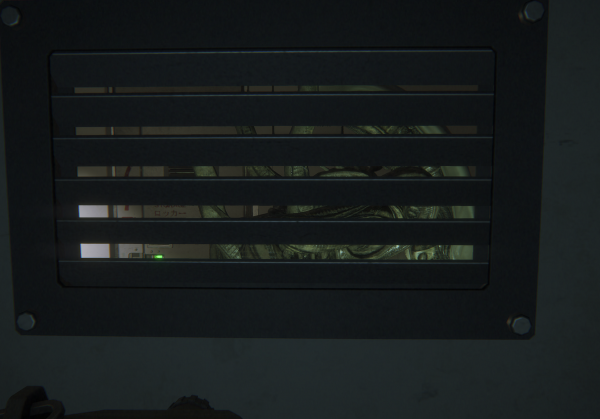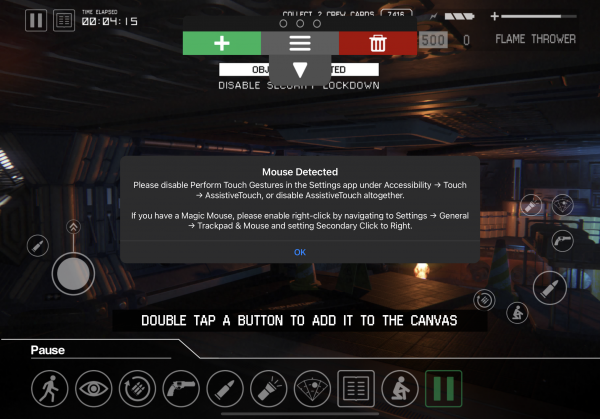Everything you need to know about Alien: Isolation on iOS
Feral Interactive's next ambitious mobile port is 2014's Alien: Isolation, a survival horror game where you play as Amanda Ripley (Ellen Ripley's daughter), developed by Creative Assembly and published by Sega. We got some advance access to the mobile version of the game and have been working our way through it. See the video above for a healthy chunk of the game in action, as well as some additional impressions below.
The first thing to note about this game is that it is pretty technically demanding. If players want to experience Alien: Isolation on iOS, they will need the following:
- A supported device running iOS 14.8 or later
- At least 11GB of free space to install the game (though it is recommended to have 22GB available)

During setup of the game, players also have the option of downloading all 7 DLC packs that come with this port of Alien: Isolation. If you choose to download all of them, the game ends up taking 11.1GB of space, which is rather large, but on par with Feral's recommendations for installation space and smaller than other ambitious mobile titles like Genshin Impact or Divinity - Original Sin 2.
The capture of the game above was done using a 3rd Generation iPad Pro (11-inch) running Alien: Isolation in "Graphics" mode, which prioritizes visual fidelity over performance. Playing this way, the game runs smoothly and looks sharp, though it doesn't run quite at 60 frames per second (more like a solid 50). Using the "Performance" mode definitely ups the frame rate, but it creates some texture pop-in issues that--while noticeable--are largely fine. The last mode available for play is "Battery Saver," which mostly looks like the "Performance" mode but running at a much lower frame rate.

While I'm still working my way through the game, I have opted to play most of Alien: Isolation in the "Graphics" mode and have had no real issues with frame rate drops or other visual problems. Looks aside, the game has largely run without any sort of technical issues, though there have been a couple of awkward loads between cutscenes but I can't really tell if those are just part of how the game was designed to begin with or something particular about this port to be aware of.
In terms of controls, Alien: Isolation uses a pretty standard set of onscreen virtual buttons, but some of the more nuanced control commands like peeking involve tapping on the screen twice and holding to enter a peeking mode. There are quite a few control configuration presets available as well as custom layouts that allow you to rearrange buttons, scale them up and down to your liking, and even add multiples of the same button on screen in case you might want easy access to the same command for each hand.

If touch controls aren't your style, Alien: Isolation also has flawless bluetooth control support both for game pads as well as mouse and keyboard. When playing with these external input devices, the on screen buttons disappear completely and all tooltips and button prompts transform into their respective buttons/keys.
I have spent most of my time with Alien: Isolation using touch controls, and they have mostly been fine. There was a bit of a learning curve to understanding how to throw certain items and there's a little bit of awkwardness about where your field of view lines up with objects before you get the prompts to interact with them, but by and large this is a game about being slow and deliberate in your movements, and if you find yourself struggling to perform a lot of timing-based maneuvers quickly, it's likely because you got yourself into a mess that would be hard to get out of, even using a different control scheme.

Luckily, Alien: Isolation also allows you to adjust the game difficulty on the fly or reload your game from a checkpoint (as opposed to a manual save point) if you get yourself into a pickle. For the most part, saving manually is the way to make sure you don't lose any progress as you make your way through the game, but you can only do that at designated emergency phones aboard the station you're exploring. If you find yourself interrupted during play or needing to roll back a bit further from a previous save, checkpoints are tied to the beginnings of distinct "missions" in the game, which are usually points at which you reach a new area or receive a new overarching objective, as opposed to between every small objective you complete.
I definitely have plans to see Alien: Isolation's main campaign through to the end, and progress in this iOS version doesn't feel like a struggle or like I'm playing a super compromised version of the game. I have definitely felt the need to adjust the game's difficulty a bit to easier settings just to make playing via touch feel more manageable, but haven't found that it takes away much from the tension or fear you experience while playing. That may change by the time I reach the end and dive into Alien: Isolation's DLC, but stay tuned for more thoughts on that front when a formal review gets posted. For now, know that Alien: Isolation seems to be a pretty high quality mobile port that offers a lot of great options for players to tune the experience to their liking.



